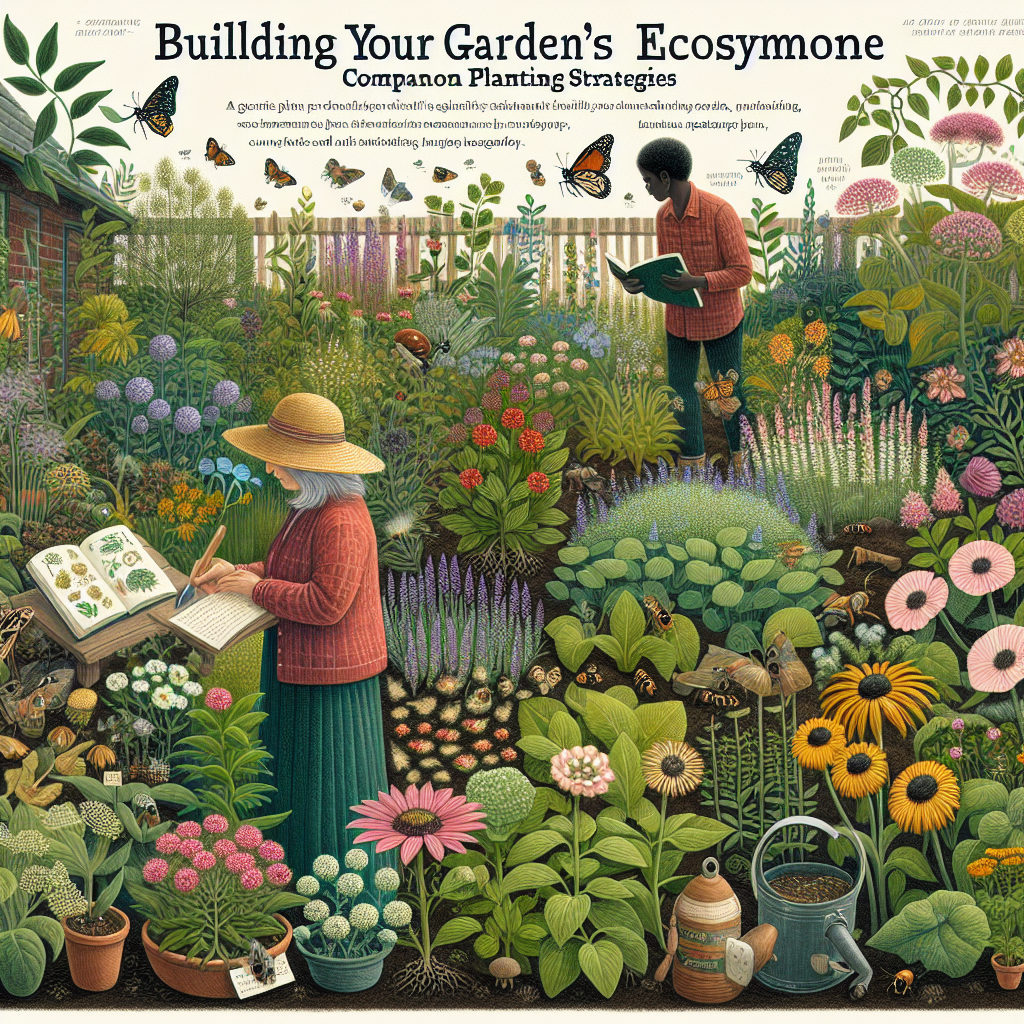When you think of a garden, do you picture a vibrant tapestry of flowers, vegetables, and herbs harmoniously thriving together? Achieving this harmonious balance is no accident. One effective way to enhance your garden’s ecosystem is through companion planting. This time-tested practice not only boosts plant growth but also promotes biodiversity and pest management. In this article, we’ll explore various companion planting strategies to help you build a thriving garden.
What is Companion Planting?
Companion planting is an age-old gardening technique where different plants are grown close together for mutual benefits. These plant relationships can improve growth, deter pests, attract beneficial insects, and enhance flavor. By understanding the natural relationships in your garden, you can create an ecosystem that thrives.
The Benefits of Companion Planting
Before diving into specific planting strategies, let’s examine the numerous benefits of companion planting:
- Natural Pest Control: Certain plants repel pests or attract beneficial insects that prey on common garden nuisances.
- Soil Health: Some plants improve soil quality by fixing nitrogen or enhancing nutrient availability.
- Optimal Space Utilization: Companion planting allows you to maximize space, as plants with different growth habits can thrive together.
- Enhanced Flavors: Some combinations are known to improve the taste of fruits and vegetables, adding unique flavors to your harvest.
Key Companion Planting Strategies
1. What Grows Well Together?
Understanding plant relationships is crucial. Here are some classic combinations:
-
Tomatoes and Basil: This is a match made in culinary heaven. Not only does basil repel pests like aphids and tomato hornworms, but it also enhances the flavor of tomatoes.
-
Carrots and Onions: This duo works well since onions can deter carrot flies while carrots can help aerate the soil for onions.
- Beans and Corn: Beans naturally fix nitrogen in the soil, which benefits corn. Furthermore, corn provides necessary support for climbing bean varieties.
2. Planting for Pest Control
Certain plants serve as natural pest repellents. Here are a few examples:
-
Marigolds: Known for their vibrant yellow and orange flowers, marigolds are excellent at deterring nematodes and aphids.
-
Nasturtiums: These edible flowers act as a “trap crop,” luring aphids away from your precious vegetables.
- Garlic: This herb not only deters aphids and spider mites but also adds a unique flavor to your dishes.
3. Attracting Beneficial Insects
To build a balanced ecosystem, attracting beneficial insects should be a priority:
-
Ladybugs: These helpful insects feast on aphids. Planting dill or fennel can attract them to your garden.
- Bees and Butterflies: Flowers like borage, lavender, and sunflowers can entice these pollinators, which are vital for fruit and vegetable production.
4. Improving Soil Fertility
Certain plants can rejuvenate and enrich your garden’s soil:
-
Legumes: Peas and beans are renowned for their ability to fix nitrogen in the soil, greatly benefitting neighboring plants.
- Comfrey: This dynamic accumulator gathers nutrients from deep soil and releases them through its decomposing leaves, making it an excellent mulch plant.
5. Companion Planting Layout Tips
-
Use a Companion Planting Chart: There are various charts available online that illustrate which plants thrive together. These can serve as handy guides as you plan your layout.
-
Rotate Crops Annually: To prevent soil depletion and diseases, practice crop rotation by changing the location of certain plants each season.
- Create Layers: Use the vertical space by planting taller plants alongside shorter ones. This maximizes sunlight exposure and creates an enjoyable aesthetic.
Final Thoughts: Cultivating Your Green Thumb
Building a garden ecosystem through companion planting can be one of the most rewarding gardening strategies. Not only will it enhance the health and yield of your plants, but the process can also deepen your connection with nature. As you experiment with different combinations, you’ll discover which pairings work best for your specific environment and preferences.
So grab your gardening gloves, embrace the art of companion planting, and watch your garden come to life in ways you never imagined. Happy planting!
Your Garden Awaits!
Are you ready to transform your garden into a flourishing ecosystem? Begin your journey with these companion planting strategies and see the difference in your garden’s health and beauty. Remember, every plant has a partner waiting to join the dance of growth!
Feel free to customize this article with your personal experiences or favorite companion plants to make it truly your own! Happy gardening!


